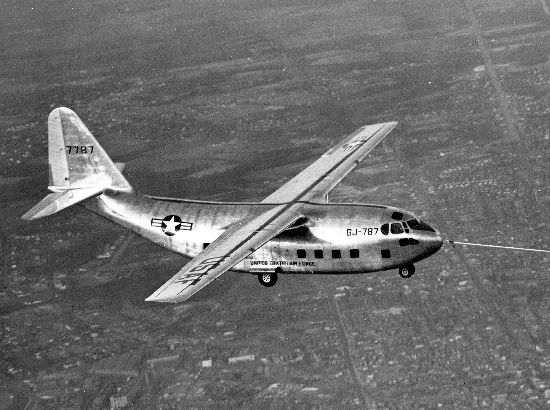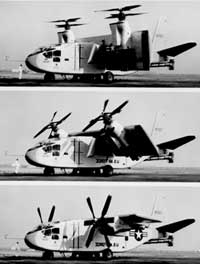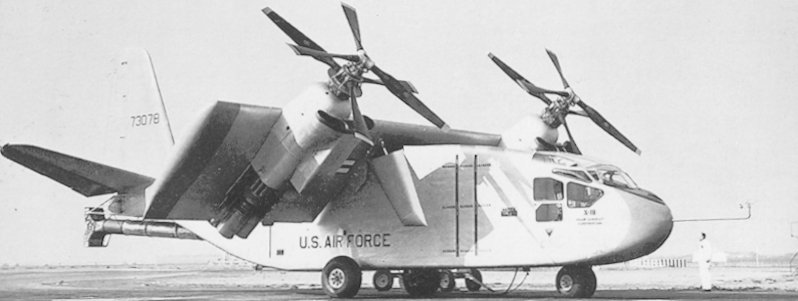|
Chase Aircraft
The Chase Aircraft Company, founded in 1943, was an American aircraft manufacturer, primarily constructing assault gliders and military transport aircraft. Lacking space for expansion, the company was purchased by Henry J. Kaiser in 1951. Plans to produce the C-123 transport for the United States Air Force collapsed amid scandal, and the company closed in 1953. A successor company, Stroukoff Aircraft, continued experimental work for several years before closing in 1959. Early products Founded in New York, New York, in 1943 with Michael Stroukoff, a Russian émigré, as president and chief designer,Gunston 1987, p.146. Chase's first aircraft design was the XCG-14 assault glider, produced for the U.S. Army Air Forces and first flying in January 1945.Jane 1951, p.214 Development of improved, enlarged versions of the aircraft continued over the next two years, with the company moving to Trenton, New Jersey, in 1946, before the XCG-14 was superseded by the XG-18, an even larger a ... [...More Info...] [...Related Items...] OR: [Wikipedia] [Google] [Baidu] |
Kaiser-Frazer
The Kaiser-Frazer Corporation (1947–1953 as Kaiser-Frazer) was the result of a partnership between industrialist Henry J. Kaiser and automobile executive Joseph W. Frazer.Kaiser Cars, 1947-1955 by Kelsey Wright at AllPar, 16 Nov 2020 In 1947, the company acquired the automotive assets of Graham-Paige, of which Frazer had become president near the end of World War II. Kaiser-Frazer was one of a few US automakers to achieve success after World War II, if only for a few years. Joseph W. Frazer left the company in 1949, replaced as president by Henry's son Edgar F. Kaiser. In 1953, Kaiser bought the ailing Willys, Willys-Overland company, mainly for its Jeep brand, and merged the Kaiser and Willys operations under the "Kaiser-Willys Corporation". The Willys-Overland branch was renamed "Willys Motors", until ten years ... [...More Info...] [...Related Items...] OR: [Wikipedia] [Google] [Baidu] |
Chase YCG-14
The Chase CG-14, also known as the G-14 or Model MS.1, was an assault glider manufactured by Chase Aircraft for the United States Army Air Forces during the Second World War. The aircraft failed to progress beyond the prototype stage, being overtaken by larger, improved glider designs. Design and development The first aircraft to be developed by Chase after its founding in 1943, the CG-14 was developed in preference to the Laister-Kauffman CG-10. Constructed from marine-grade mahogany, as spruce was being used by the war effort in higher priority projects, the XG-14 featured improved crash protection when compared to preceding gliders.Air Force Association The Air & Space Forces Association (AFA) is an independent, 501(c)(3) non-profit, professional military association for the United States Air Force and United States Space Force. Headquartered in Arlington, Virginia, its declared mission is .... ''Air Force Magazine'', volume 32, p.24. Operational history The XCG-14 ... [...More Info...] [...Related Items...] OR: [Wikipedia] [Google] [Baidu] |
General Electric J47
The General Electric J47 turbojet (GE company designation TG-190) was developed by General Electric from its earlier J35. It first flew in May 1948. The J47 was the first axial-flow turbojet approved for commercial use in the United States. It was used in many types of aircraft, and more than 30,000 were manufactured before production ceased in 1956. It saw continued service in the US military until 1978. Packard built 3,025 of the engines under license. Design and development The J47 design used experience from the TG-180/J35 engine which was described by ''Flight'' magazine in 1948 as the most widely used American-conceived turbojet. Overhaul life for the J47 ranged from 15 hours (in 1948) to a theoretical 1,200 hours (625 achievable in practice) in 1956. For example, the J47-GE-23 was rated to run 225 hours time between overhauls. As installed on the F-86F, it experienced one in-flight shutdown every 33,000 hours in 1955 and 1956. Variants ;J47-GE-1:(TG-190A) thrust. ;J ... [...More Info...] [...Related Items...] OR: [Wikipedia] [Google] [Baidu] |
Bomber
A bomber is a military combat aircraft designed to attack ground and naval targets by dropping air-to-ground weaponry (such as bombs), launching torpedoes, or deploying air-launched cruise missiles. The first use of bombs dropped from an aircraft occurred in the Italo-Turkish War, with the first major deployments coming in the First World War and Second World War by all major airforces causing devastating damage to cities, towns, and rural areas. The first purpose built bombers were the Italian Caproni Ca 30 and British Bristol T.B.8, both of 1913. Some bombers were decorated with nose art or victory markings. There are two major classifications of bomber: strategic and tactical. Strategic bombing is done by heavy bombers primarily designed for long-range bombing missions against strategic targets to diminish the enemy's ability to wage war by limiting access to resources through crippling infrastructure or reducing industrial output. Tactical bombing is aimed at coun ... [...More Info...] [...Related Items...] OR: [Wikipedia] [Google] [Baidu] |
Exercise Swarmer
Exercise SWARMER (also known as Operation SWARMER) was a large-scale military exercise conducted in the spring of 1950 by the United States Air Force, United States Army, and United States Navy in the area of Fort Bragg, North Carolina in the southeastern United States. SWARMER was designed to test the capability of the Air Force and Army to operate and maintain an airhead, a base secured in enemy territory where troops and supplies could be received and evacuated by air, under simulated combat conditions. This was also the first tactical use of the strategic airlift technique, intending to apply lessons learned during the Berlin Airlift to battlefield logistics. Starting on 24 April 1950 and running through 8 May 1950, the exercise took place over ten days and involved over 60,000 personnel. Scenario In the hypothetical situation set forth to provide background for the play of the maneuver, the United States was at war with an Aggressor, whose forces had seized the Florida peni ... [...More Info...] [...Related Items...] OR: [Wikipedia] [Google] [Baidu] |
Pope AFB
Pope Field is a U.S. military facility located 12 miles (19 km) northwest of the central business district of Fayetteville, in Cumberland County, North Carolina, United States.. Federal Aviation Administration. effective 15 November 2012. Formerly known as Pope Air Force Base, the facility is now operated by the U.S. Air Force via a memorandum of agreement (MOA), and an inter-services support agreement (ISSA) with the U.S Army as part of Fort Bragg. History Origins In 1918, Congress established Camp Bragg, an Army field artillery site named for the Confederate General Braxton Bragg. An aviation landing field was added a year later. The War Department officially established "Pope Field" in 1919, and it ranks as one of the oldest installations in the Air Force. Pope AFB is named after First Lieutenant Harley Halbert Pope who was killed on 7 January 1919, when the Curtiss JN-4 Jenny he was flying crashed into the Cape Fear River. After five years, Camp Bragg became a perma ... [...More Info...] [...Related Items...] OR: [Wikipedia] [Google] [Baidu] |
Fairchild C-123 Provider
The Fairchild C-123 Provider is an American military transport aircraft designed by Chase Aircraft and then built by Fairchild Aircraft for the U.S. Air Force. In addition to its USAF service, which included later service with the Air Force Reserve and the Air National Guard, it also went on to serve most notably with the U.S. Coast Guard and various air forces in Southeast Asia. During the War in Vietnam, the C-123 was used to deliver supplies, to evacuate the wounded, and also used to spray Agent Orange. Design and development The C-123 Provider was designed originally as an assault glider aircraft for the United States Air Force (USAF) by Chase Aircraft as the XCG-20 (Chase designation MS-8 Avitruc)Gunston 1980a, p. 170. Two powered variants of the XCG-20 were developed during the early 1950s, as the XC-123 and XC-123A. The only difference between the two was the type of engines used. The XC-123 used two Pratt & Whitney R-2800-23 air-cooled radial piston engines, whil ... [...More Info...] [...Related Items...] OR: [Wikipedia] [Google] [Baidu] |
Chase XCG-20
The Chase XCG-20, also known as the XG-20 and by the company designation MS-8 Avitruc,Gunston 1980, p. 170. was a large assault glider developed immediately after World War II by the Chase Aircraft Company for the United States Air Force, and was the largest glider ever built in the United States. The XG-20 did not see production due to a change in USAF requirements, however, it was modified into the successful Fairchild C-123 Provider twin-engined transport aircraft which saw extensive service in the Vietnam War. Design and development Following the end of World War II, the United States Army Air Forces, which became the United States Air Force (USAF) in 1947, developed a requirement for a new, large assault glider type to replace smaller types that were then in service, all existing gliders having been declared obsolete.Noetzel 1992, p.27. The new gliders were to be constructed entirely of metal, and were also required to be easily adaptable to a powered configuration. As part ... [...More Info...] [...Related Items...] OR: [Wikipedia] [Google] [Baidu] |
VTOL
A vertical take-off and landing (VTOL) aircraft is one that can take off and land vertically without relying on a runway. This classification can include a variety of types of aircraft including helicopters as well as thrust-vectoring fixed-wing aircraft and other hybrid aircraft with powered rotors such as cyclogyros/cyclocopters and gyrodynes. Some VTOL aircraft can operate in other modes as well, such as CTOL (conventional take-off & landing), STOL (short take-off & landing), or STOVL (short take-off & vertical landing). Others, such as some helicopters, can only operate as VTOL, due to the aircraft lacking landing gear that can handle taxiing. VTOL is a subset of V/STOL (vertical or short take-off & landing). Some lighter-than-air aircraft also qualify as VTOL aircraft, as they can hover, takeoff and land with vertical approach/departure profiles. Electric vertical takeoff and landing aircraft, or eVTOLs, are being developed along with more autonomous flight control ... [...More Info...] [...Related Items...] OR: [Wikipedia] [Google] [Baidu] |
Tiltwing
A tiltwing aircraft features a wing that is horizontal for conventional forward flight and rotates up for vertical takeoff and landing. It is similar to the tiltrotor design where only the propeller and engine rotate. Tiltwing aircraft are typically fully capable of VTOL operations.Markman, Steve and Bill Holder. "Tilt-Wing VTOL Systems". ''Straight Up: A History of Vertical Flight''. Schiffer Publishing, 2000. . The tiltwing design offers certain advantages in vertical flight relative to a tiltrotor. Because the slipstream from the rotor strikes the wing on its smallest dimension, the tiltwing is able to apply more of its engine power to lifting the aircraft. For comparison, the V-22 Osprey tiltrotor loses about 10% of its thrust to interference from the wings. Another advantage of tiltwing aircraft is the ease of transition between VTOL and horizontal flight modes. A tiltrotor must first fly forwards like a helicopter, building airspeed until wing lift is sufficient to allow ... [...More Info...] [...Related Items...] OR: [Wikipedia] [Google] [Baidu] |
Hiller X-18
The Hiller X-18 was an experimental cargo transport aircraft designed to be the first testbed for tiltwing and V/STOL (vertical/short takeoff and landing) technology. Development Design work started in 1955 by Stanley Hiller Jr and Hiller Aircraft Corporation received a manufacturing contract and funding from the U.S. Air Force to build the only X-18 built, serialled ''57-3078''. To speed up construction and conserve money, the plane was constructed from scavenged parts including a Chase YC-122C Avitruc fuselage, ''49-2883'', and turboprops from the Lockheed XFV-1 and Convair XFY-1 Pogo experimental fighter programs. The tri-bladed contra-rotating propellers were a giant 16 ft (4.8 m) across. The Westinghouse turbojet engine had its exhaust diverted upwards and downwards at the tail to give the plane pitch control at low speeds. Hiller nicknamed their X-18 the Propelloplane for public relations purposes. Service history Preliminary testing occurred at Moffett F ... [...More Info...] [...Related Items...] OR: [Wikipedia] [Google] [Baidu] |
YC-122 Avitruc
The Chase XCG-18A and YC-122 Avitruc (known internally as the Chase MS.7) was a military transport aircraft designed by Chase Aircraft and produced in limited numbers in the United States in the late 1940s, initially as a glider, but definitively in powered form. The design was based on the CG-14 cargo glider but was substantially larger and featured all-metal construction. It was a high-wing cantilever monoplane. The fuselage was of rectangular cross-section and featured a loading ramp at its rear. The main undercarriage units were carried at the sides of the fuselage and were fixed, while the nosewheel was retractable. In its powered form, two radial engines were fitted in nacelles in the wings. Design and development The USAAF's experiences with cargo gliders during World War II indicated a role for a similar aircraft in the post-war inventory, but one capable of carrying a substantially heavier load and with greater recoverability than the essentially expendable wartime wo ... [...More Info...] [...Related Items...] OR: [Wikipedia] [Google] [Baidu] |



.jpg)





